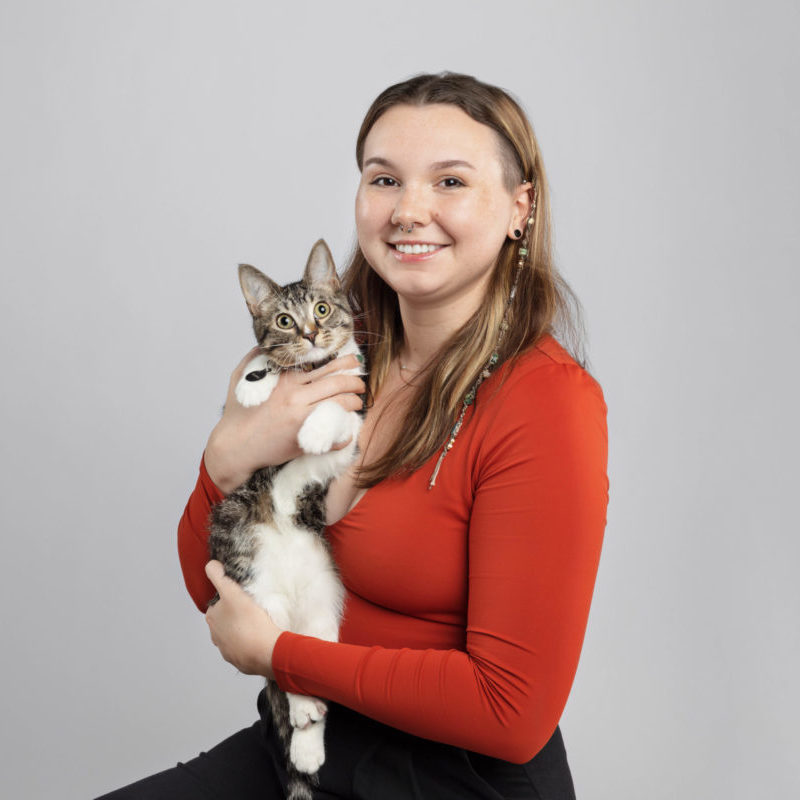Canine Influenza Virus Update
Canine Influenza Virus (CIV) has continued to spread through our area. As of June 21st, the Board of Animal Health had 75 documented cases from Ramsey, Hennepin, and Washington Counties. Because testing is costly, the true number of cases is likely higher. The best way to prevent your dog from becoming infected with CIV is to avoid contact with other dogs and to get them vaccinated. The good news is that vaccines, which had been very difficult to acquire, are becoming more available. We will be reaching out to dog owners once we have vaccines, so watch your email for messages from us if you would like to get your dog vaccinated!
Odd Canine Behaviors Explained
Dogs do some strange things, but not every odd behavior is cause for alarm. Here are a couple of the weirdest normal dog behaviors that pet owners often ask their vet about.
Reverse sneezing: Dog owners who witness reverse sneezing for the first time often report that their dog can’t breathe, is choking, or seems to be trying to cough something up but it’s stuck in his throat. Reverse sneezing is to the back of the throat what sneezing is to the nose- the body is attempting to clear something irritating, like an allergen, dust, or mucous, from the airway. While alarming, reverse sneezing usually resolves on its own within 30 seconds to a minute, and most dogs aren’t bothered by it. You can often interrupt the behavior by tapping your dog on the nose or encouraging him to eat or drink. As with “typical” sneezing, reverse sneezing that happens more frequently than normal or is accompanied by other symptoms like lethargy can be a sign of illness. Wondering what a reverse sneeze sounds like? Check out http://www.youtube.com/watch?v=1UyBrb0Hhpk .
Eating poop: Poop-eating, also called coprophagia, is one of the most foul behaviors that dogs demonstrate. Unfortunately, this behavior is very normal in a species designed to scavenge any potential food source. While owners are often concerned that coprophagia is a sign of a health issue or nutrient deficiency, studies have shown that diet has no impact on the likelihood that a dog will eat stool. The main factors that increase the likelihood of poop eating include living in a multi-dog household, breed predisposition, and a tendency to eat regular dog food with gusto. Although many products are touted to stop poop-eating behavior, none have been proven to work reliably. The best option to limit stool eating is to scoop poop in your yard right away to limit access, and keep a tight leash on your pet outside the home to keep him away from other pets’ stools.
Eating grass: Dog owners often worry that grass eating is a sign that their pet has an upset stomach. While some dogs are triggered to eat grass when they feel nauseated, many simply seem to enjoy the taste. Wild canids like wolves and foxes vary their diets seasonally depending on what foods are available, so the desire for dogs to eat grass, berries, and fruits in the spring and summer is probably an old habit from their ancestors.
Feline Asthma
Our recent poor air quality has triggered flare ups in many patients with chronic respiratory diseases. One of the more severe of these diseases is feline asthma. This condition is very similar to asthma in humans. Asthma refers to a combination of airway problems that includes constriction (narrowing) of the small airways, increased mucus production in the airways, decreased mucus clearance, influx of inflammatory cells into the airways, airway wall thickening, and/or destruction of small airspace walls (emphysema). Regardless of which processes are occurring in your cat, the consistent result is an obstruction of the small airways, and the diversity of processes possible to lead to this accounts for the range in severity of clinical signs and the unpredictable response to therapy.
In many cases, we do not know what causes the signs of feline asthma. Suggested causes include a response to inhaled allergens (allergies), infection, parasites, or heartworm disease. Asthma can occur in cats of any age, though it is most common in young to middle-aged animals. Common clinical signs include coughing and intermittent respiratory distress (difficulty breathing, wheezing, gasping), though between episodes, the cat is usually normal. Occasionally, signs may be associated with a change in season, new cat litter, cigarette or fireplace smoke, carpet cleaners, or new bathroom products (perfume, aerosolized sprays).
Diagnosis of feline asthma relies on a combination of observations by the pet’s owner, physical exam findings, and chest radiographs (x-rays). Some cats come to the vet because of an acute crisis, while others are brought in because of more subtle observations like an increased respiratory rate. Treatment depends on how severe the symptoms are. Very sick cats may need to be hospitalized with oxygen support and injectable medications until they are stable. Cats with more mild symptoms are usually treated on an outpatient basis. Treatment can include oral medications (steroids, antihistamines), inhalers (steroids, bronchodilators), and/or environmental management (use of air purifiers, removal of allergens or irritants if possible).
Caring for a cat with asthma can be stressful. Connecting with others who have asthmatic kitties can be very supportive. Check out Fritz the Brave for educational articles, videos, and support from fellow caregivers of cats with asthma. This disease is very manageable with the right resources!
Happy Pride!
June is Pride Month, and we wanted to take this opportunity to reaffirm our commitment to serve families of all types with compassion, kindness, and loving care. When your pet is sick, it can be a very vulnerable experience. Members of the LGBTQIA+ community are more likely than most to have had negative experiences navigating the human healthcare system. We strive to provide a safe, supportive experience at St. Francis where you feel heard and where you are a collaborative part of your pet’s care team. We want everyone to feel safe when they entrust us with the care of their pets.
In honor of Pride Month, we have made a donation to PrideVMC, a nonprofit organization whose mission is to create a better world for the LGBTQ+ veterinary community. You can learn more about PrideVMC here. Happy Pride!
Employee Spotlight: Kipling Weichselbaum
Kipling is one of our team of talented veterinary assistants. Originally from Minnesota, she attended school for Motion Design at Ringling College of Art and Design in Sarasota, Florida. Since 2022, she has been working at the clinic, got married, and has adopted her soul cat from Cause for Paws (BeetleJuice). She loves to go hiking around Minnesota with her husband and BeetleJuice, taking tons of pictures of her little family adventures to share with everyone. In her spare time, she enjoys photography and sewing.
What is your favorite aspect of veterinary medicine?
I really like getting to know clients and their pets well. Forging personal relationships with clients and their fur babies is really special.
What do you think is special about St. Francis? Why do you love working here?
I think St. Francis does a really good job at creating close relationships with clients, patients, and staff. I feel like it isn’t as common to have those kinds of relationships at other veterinary businesses. St. Francis seems to really try and always evolve with the clients and patients needs at any given time. In return St. Francis has really nice and patient clients that want nothing more than to do what is best for their furry friends.
Upcoming Closures
Tuesday, July 4th (Independence Day)
Saturday, September 2nd through Monday September 4th (Labor Day)



